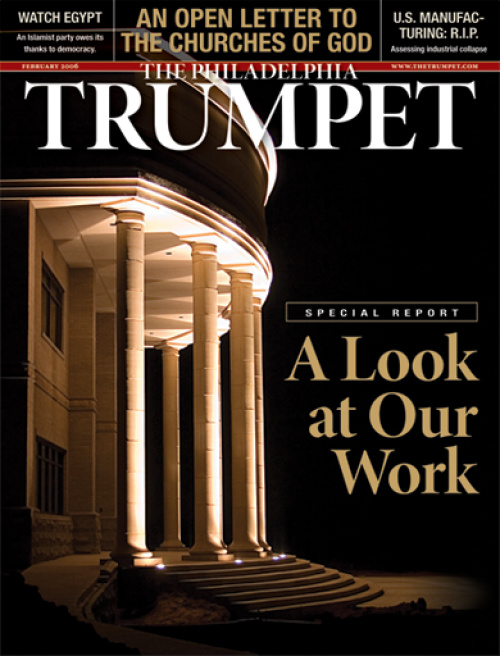Ruling on Homosexual Priests
On Nov. 29, 2005, the Vatican published its policy on homosexuality in the Roman Catholic priesthood. The pronouncement has many Catholics parsing the language, looking for loopholes.
The document specifically forbids three groups—“those who practice homosexuality, present deep-seated homosexual tendencies or support the so-called ‘gay culture’”—from being in the priesthood, while permitting those with a “transitory problem” to serve as priests if they have overcome the tendency for three years.
In a church with a billion believers, led by a priesthood of voluntarily celibate men, many prominent Catholics were thus quick to explain how the document did in fact permit homosexuality in the priesthood.
Bishop William S. Skylstad, president of the U.S. Conference of Catholic Bishops, issued a statement acknowledging that the document raised the question of “whether a homosexually inclined man can be a good priest.” He said yes—as long as he is a dedicated servant who preaches against homosexual acts.
James Bretzke, a Catholic priest and chairman of theology and religious studies at the University of San Francisco, said that the language in the original Italian version, while labeling as unacceptable “a person actively looking at pornography or visiting gay bars,” is fuzzy enough to permit someone who is attracted to men. “It’s presented in a somewhat ambiguous fashion with in-house vocabulary that allows for a range of interpretation to be taken from it” (San Francisco Chronicle, Nov. 29, 2005).
In the British Catholic weekly the Tablet, Timothy Radcliffe, the former Master of the Dominicans, essentially concurred, saying of the instruction, “[W]e must give it as positive an interpretation as possible … trying to discern what are the true intentions of the authors.” Radcliffe rejects any notion that the Vatican was banning men who have a “permanent homosexual orientation,” because of his personal conviction that the Catholic Church has many homosexual priests who are “among the most dedicated and impressive priests I have met. So,” he concluded, “no priest who is convinced of his vocation should feel that this document classifies him as a defective priest.” Thus, Radcliffe interprets the document to outlaw from the priesthood only that individual “whose sexual orientation is so central to his self-perception as to be obsessive, dominating his imagination” (Nov. 26, 2005).
Whether such views accurately reflect Vatican intent, or are merely wishful thinking by individuals unwilling to accept an order, will be seen as the instruction is carried out. But considering the Vatican’s patently mild response to the Catholic sex abuse scandals in the United States in 2002, one could safely assume they are not too far from the mark.
The thorniness of this entire discussion does bring to mind a much simpler outline of criteria for ministerial ordination. In fact, this scriptural outline presents plain ideals for a godly ministry that are quite different from those of a celibate, even homosexual, ministry.
The Apostle Paul provided this list to the Evangelist Timothy: “A bishop [minister] then must be blameless, the husband of one wife, vigilant, sober, of good behaviour … one that ruleth well his own house, having his children in subjection with all gravity; (for if a man know not how to rule his own house, how shall he take care of the church of God?)” (1 Timothy 3:1-5).
Paul was not mandating that a minister be a married man; in fact, elsewhere he praised those few who remained celibate in order to dedicate themselves more fully to the work of God. But in this and a parallel passage in Titus 1:6—the clearest scriptural descriptions of what to look for in a potential minister—unmistakable emphasis is placed on the man having a sound, healthy family life.
The reason for that fact is that family is absolutely central to the good news of the Bible! Paul considered godly family so central to the gospel that he declared any minister who failed to implement the laws governing family life as being unfit to serve the church.
Many people rigorously support the biblical teachings on how to build and fortify strong families, but very few understand God’s profound spiritual intent in creating family life and the specific laws that govern it. If you would like to undertake a thorough biblical study of this inspiring subject, consider as your starting point our free booklet God Is a Family.
